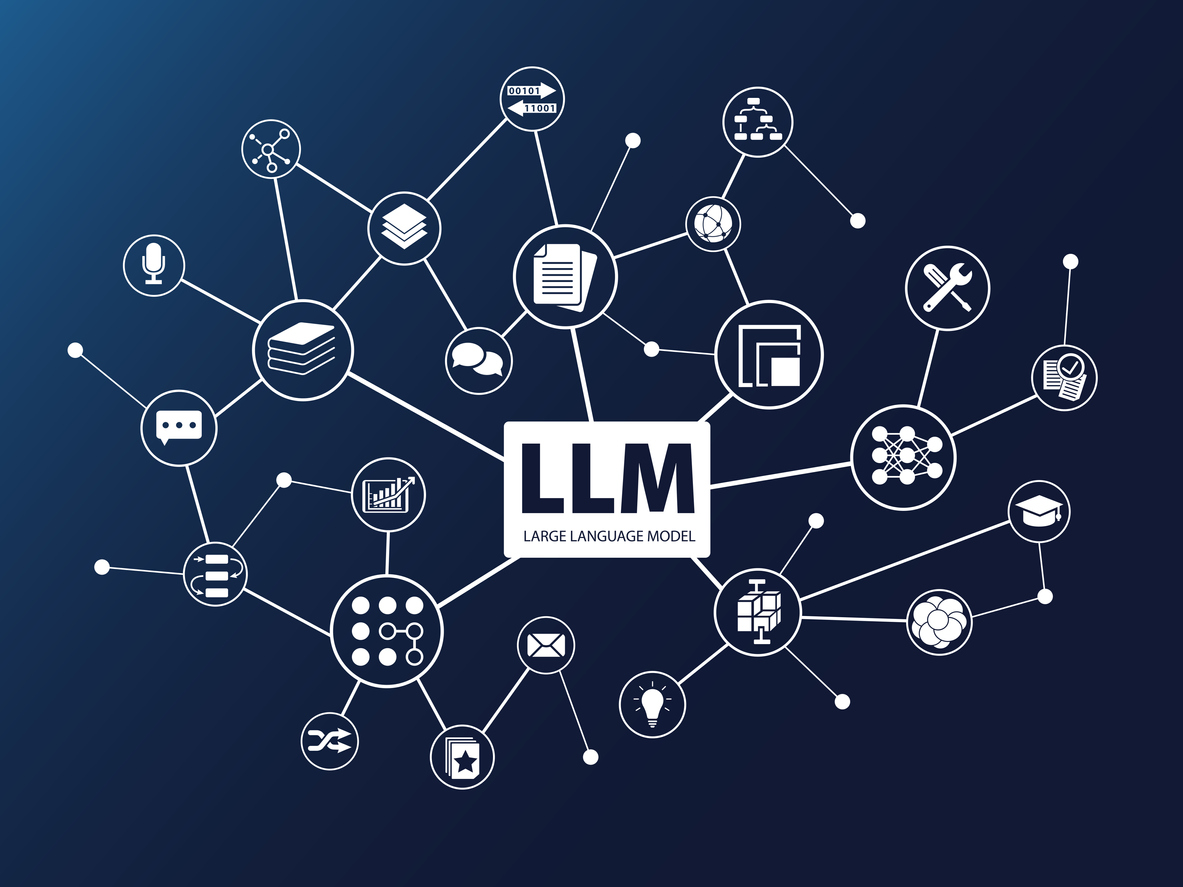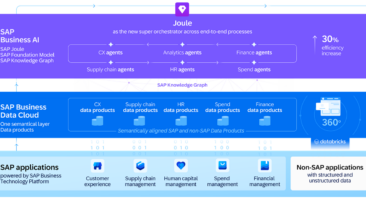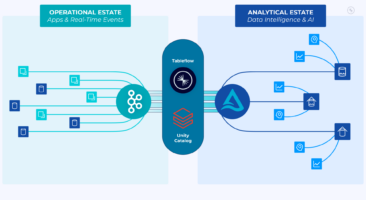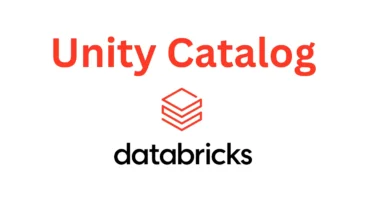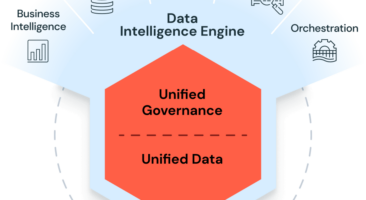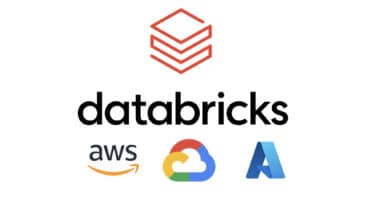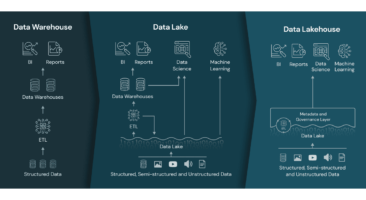Exploring the Power of Large Language Models: Unleashing New Possibilities for AI
In the world of artificial intelligence, large language models (LLMs) are revolutionizing how we interact with technology. These advanced systems, such as GPT-4, can accurately understand and generate human-like text. This blog post will explore the power of LLMs and their diverse applications across various sectors. LLMs are unlocking new possibilities for AI-driven solutions, from education to healthcare, business to entertainment. Join us on this journey as we delve into the use cases, benefits, and future potential of these groundbreaking technologies.
Introduction to Large Language Models (LLMs)
Large language models (LLMs) have revolutionized natural language processing, enabling machines to generate coherent and contextually appropriate text. LLMs act as virtual tutors in education, provide medical advice in healthcare, generate insights for businesses, and assist in entertainment industry applications. The benefits of LLMs include rapid task automation and improved accessibility. Experts predict a future filled with exciting developments where LLMs solve more problems and aid humanity’s progress toward new frontiers while adhering to ethical guidelines for responsible use.
Large Language Models (LLMs) are advanced AI algorithms that have revolutionized the field of natural language processing. These models, such as BERT and GPT-4, are built upon vast datasets and sophisticated training techniques. LLMs enable machines to generate coherent and contextually appropriate text, making them invaluable tools in various AI research and application domains.
What are Large Language Models
Large Language Models (LLMs) are advanced AI algorithms trained on vast datasets to understand and generate human-like language. Unlike traditional language models, LLMs can process and comprehend complex information, allowing for more coherent and contextually accurate responses. These models, such as BERT and GPT-4, offer a range of critical features and capabilities that enable them to assist in various sectors, including education, healthcare, business, entertainment, and scientific research. With their power to automate tasks, provide expert-level insights accessible by all users, scale according to business needs, and democratize knowledge through personalized learning experiences – LLMs have the potential to revolutionize numerous industries.
Underpinning Technology
Large Language Models (LLMs) are powered by advanced artificial intelligence (AI) algorithms, such as deep learning. These algorithms enable the models to process and understand vast amounts of text data. One popular algorithm used in training LLMs is BERT (Bidirectional Encoder Representations from Transformers), which helps the models learn contextual relationships within sentences and documents. Additionally, LLMs utilize Natural Language Processing (NLP) techniques to extract meaning and insights from text, allowing for more coherent and accurate language generation.
The training process of Large Language Models relies on deep learning algorithms that use neural networks with multiple layers. These algorithms analyze massive datasets to identify patterns, relationships, and linguistic structures within the text data inputted into the model. By iteratively adjusting their internal weights based on feedback signals during this training phase, these deep learning algorithms optimize the performance of LLMs, enhancing their ability to generate high-quality human-like language outputs.
Natural Language Processing (NLP) techniques employed:
Large Language Models employ various NLP techniques to ensure effective understanding and generation of natural language. These include:
- Tokenization – breaking down text into smaller units like words or subwords.
- Part-of-speech tagging – assigning grammatical labels to each word.
- Named entity recognition – identifying entities such as names or organizations.
- Syntactic parsing – determining sentence structure.
- Sentiment analysis – assessing emotional tone.
By leveraging these NLP techniques alongside powerful AI capabilities, LLMs can accurately interpret textual content for various applications across different industries.
Evolution of LLMs
Historical development and milestones in the field of large language models:
- Early Language Models: The journey of large language models began with rudimentary algorithms and limited datasets, resulting in less coherent outputs.
- Advancements: Breakthroughs like BERT (Bidirectional Encoder Representations from Transformers) revolutionized natural language processing by improving context understanding.
- State-of-the-Art LLMs: GPT-3 (Generative Pre-trained Transformer 3) represents a significant milestone, capable of generating remarkably human-like text.
Comparison between early language models and modern-day LLMs:
- Output Quality: Early models lacked coherence, while modern LLMs produced highly coherent and contextually relevant responses.
- Dataset Size: Early models had access to smaller datasets, restricting their learning capacity. Modern LLMs benefit from vast data repositories for enhanced performance.
- AI Algorithms: Advances like transformers enable more accurate predictions and better contextual understanding in modern LLMs.
Significance in AI
Large language models (LLMs) have significant applications and use cases across industries. These models powered by advanced algorithms and trained on vast datasets, enhance natural language understanding and enable more coherent dialog systems and chatbots. The potential for enhancing human-machine interaction with these advanced conversational agents is immense, revolutionizing how we communicate with AI-driven technologies in various domains.
Use Cases of LLMs
LLMs are revolutionizing education by serving as intelligent tutoring systems, helping students grasp complex concepts. In healthcare, LLMs provide preliminary health advice, synthesize medical research, and improve communication between patients and clinicians. Businesses are leveraging LLMs to generate insights from unstructured data, enhance customer service through AI chatbots, and aid in content creation. Additionally, LLMs contribute to more natural dialogue in video games and assist scriptwriting for entertainment purposes. Scientific researchers benefit from LLMs by speeding up literature review processes, identifying research gaps, and making predictions.
Education
Automated grading and feedback have revolutionized the education landscape, allowing for faster and more consistent evaluation of student work. Virtual tutors powered by large language models provide personalized learning experiences, tailoring content to individual students’ needs. Natural language understanding in e-learning platforms enables more interactive and intuitive educational experiences, making it easier for students to grasp complex concepts. These advancements reshape traditional education methods, creating a more efficient and accessible learning environment.
Healthcare
Large language models (LLMs) are revolutionizing the industry with their capabilities in healthcare. They can assist in patient diagnosis and treatment recommendations, analyze clinical trials for drug discovery, and summarize medical records. These applications offer immense potential to enhance healthcare outcomes and streamline processes.
- Patient diagnosis and treatment recommendation: LLMs can process vast amounts of patient data to provide accurate diagnoses and recommend appropriate treatment plans.
- Clinical trial analysis and drug discovery: LLMs help researchers analyze complex data from clinical trials, leading to faster identification of effective treatments.
- Medical record summarization: LLMs extract relevant information from medical records, providing concise summaries that aid in decision-making.
Integrating LLMs into healthcare can potentially improve patient care, accelerate research advancements, and optimize workflow efficiency.
Business
- Customer service chatbots with natural language processing capabilities
- Sentiment analysis for brand reputation management
- Market research and consumer insights using text data
- Content creation and copywriting.
Large language models have revolutionized the business sector, enabling innovative solutions and enhancing operational efficiency. With their natural language processing capabilities, customer service chatbots can provide seamless assistance, improving satisfaction. Additionally, sentiment analysis allows businesses to monitor and manage their brand reputation by analyzing real-time customer feedback. Moreover, market research and consumer insights can be obtained through large-scale analysis of text data, helping companies make informed decisions based on accurate trends and patterns. Content creation and copywriting have also been transformed by LLMs. These models can generate high-quality content, such as blog posts, articles, and even advertising copy, reducing the time and effort required for manual content creation.
Entertainment
Chat-based interactive storytelling experiences offer a unique form of entertainment, allowing users to actively participate in the narrative and shape the outcome through their choices. With large language models, these experiences can be more immersive and dynamic than ever before.
Content generation for video games or virtual reality simulations has been revolutionized by large language models. These models can generate realistic dialogue for non-player characters, enhancing the overall gaming experience and making interactions feel more natural.
Automatic subtitling and translation services for movies or TV shows have become more accurate and efficient with the use of large language models. This technology enables seamless communication across different languages, improving accessibility to global audiences while preserving linguistic nuances.
Scientific Research
Language-based search engines have revolutionized the way researchers find relevant papers, saving time and effort. Text summarization of scientific articles has also become more efficient, allowing scientists to quickly grasp the main points without reading lengthy papers. Furthermore, the aid in analyzing large amounts of textual data from experiments has greatly enhanced research capabilities.
- Language-based search engines
- Text summarization of scientific articles
- Aid in analyzing large amounts of textual data from experiments
Benefits of LLMs
Efficiency and Productivity: Large language models (LLMs) can automate tasks and increase productivity by handling complex data processing, content generation, and analysis faster than humans.
Accessibility: LLMs make information and services more accessible to a broader audience by providing expert-level insights in user-friendly formats. They bridge the gap between experts and non-experts, enabling access to specialized knowledge without extensive training.
Scalability: Businesses can benefit from LLMs’ scalability as they offer customizable solutions tailored to meet specific needs. This allows organizations to leverage the power of AI without significant infrastructure investments or resource constraints.
Democratizing Knowledge: LLMs have the potential to democratize education by offering personalized learning experiences. They enable learners of all backgrounds to access high-quality educational resources, empowering individuals with knowledge regardless of their location or financial status.
Efficiency and Productivity
Faster and more accurate natural language processing: Large language models (LLMs) revolutionize natural language processing, enabling faster and more accurate analysis of text data. With their advanced algorithms and vast knowledge base, LLMs can quickly understand complex linguistic nuances and provide precise insights.
Automating repetitive tasks with language-based models: LLMs excel at automating repetitive tasks that traditionally require human input. By leveraging their deep understanding of language, these models streamline processes such as content creation, data analysis, and information retrieval. This frees up valuable time for professionals to focus on higher-level decision-making tasks.
Enhancing customer support through intelligent chatbots: Intelligent chatbots powered by LLMs enhance customer support by providing personalized assistance in real-time. These AI-powered bots can handle a wide range of inquiries accurately and efficiently while maintaining a conversational tone. By improving response times and resolving issues promptly, businesses can deliver exceptional customer experiences
Accessibility
They are improving accessibility for individuals with disabilities through speech recognition and text-to-speech capabilities. These features enable people with visual or motor impairments to interact with technology more easily, enhancing their independence and inclusion.
They are enabling multilingual communication by providing real-time translation services. Large language models can bridge linguistic barriers by instantly translating spoken or written content into different languages, facilitating effective communication between people from diverse backgrounds.
They empower users to interact with complex systems using simple, conversational interfaces. With the help of large language models, individuals can engage in natural conversations with machines, making it easier for non-experts to navigate intricate systems and access information without technical expertise.
Scalability
- Handling large volumes of data and processing it efficiently in real-time: Large language models offer the capability to handle massive amounts of data and process it quickly, enabling organizations to make real-time decisions based on complex information.
- Scaling up AI applications across multiple platforms and devices without compromising performance: With large language models, businesses can seamlessly deploy AI applications on various platforms and devices, ensuring consistent performance regardless of the user’s choice of technology.
- Supporting simultaneous interactions from numerous users without degradation in response time: Large language models allow for smooth interactions with multiple users simultaneously, maintaining fast response times even during peak usage.
Democratizing Knowledge
Increasing access to information is crucial in democratizing knowledge. Large language models can extract knowledge from vast amounts of unstructured data, making valuable insights accessible to a broader audience. By tailoring content generation based on user preferences, personalized learning experiences can be facilitated, allowing individuals to acquire explicitly tailored knowledge. Furthermore, intelligent information retrieval systems enable organizations to share knowledge more effectively and efficiently, enhancing team collaboration and innovation. With these advancements, the barriers to accessing and sharing knowledge are gradually broken down, empowering individuals and organizations.
Future of LLMs
The future holds exciting possibilities as large language models (LLMs) evolve. Experts predict that LLMs will become even more sophisticated, capable of understanding context and generating highly accurate responses. These advancements will open doors for new use cases in diverse fields such as law, journalism, and customer service.
Additionally, LLMs can play a crucial role in solving complex problems. By analyzing vast amounts of data and detecting patterns, they can assist in tackling challenges like climate change prediction or disease outbreak monitoring. However, careful consideration must be given to ethical issues such as privacy concerns and bias mitigation to ensure responsible development and deployment of LLM technology.
In conclusion, the future of LLMs looks promising, with their potential for further advancements across industries while addressing critical global challenges. Organizations must harness this power responsibly by embracing ethical guidelines.
Potential Developments
Enhancing natural language understanding opens up new possibilities for large language models. With improved algorithms and training techniques, these models can better comprehend the nuances of human communication, leading to more accurate and context-aware responses.
Improving machine translation capabilities is another potential development in the field of large language models. By leveraging their vast knowledge and contextual understanding, these models can bridge the gap between languages, enabling seamless communication across cultures and facilitating global collaboration.
Advancements in chatbot and virtual assistant functionalities are also on the horizon. Large language models have the potential to become even more conversational and capable of handling complex tasks. This could revolutionize customer service, personal assistance, and various other domains where intelligent virtual agents play a crucial role.
Evolution of LLMs
From GPT-3 to more sophisticated models, the evolution of LLMs has been marked by technological advancements. These include integrating multimodal learning into LLM architecture and increased scalability and efficiency in model training.
- Integration of multimodal learning: LLMs are now capable of processing and understanding multiple types of data, such as text, images, and audio. It enables them to provide a more comprehensive understanding of information.
- Increased scalability and efficiency: LLMs can handle larger datasets and train faster than ever with improved model training techniques. It allows for quicker deployment and adoption in various industries.
Solving Future Problems
Addressing bias and ethical concerns in AI-generated content:
- Develop robust algorithms that can detect and mitigate biases in AI-generated content.
- Implement diverse training datasets to ensure fair representation across different demographics.
- Establish clear guidelines for the ethical use of large language models, including transparency about their limitations.
Supporting complex decision-making processes with contextual analysis:
- Enhance large language models with contextual understanding to provide more accurate and relevant information.
- Enable the integration of external data sources to enrich decision-making capabilities.
- Continuously update models to adapt to changing contexts and improve accuracy over time.
Enabling personalized user experiences through tailored responses:
- Train large language models on individual user preferences and behaviors for personalized recommendations.
- Utilize natural language processing techniques to understand user intent and provide more contextually appropriate responses.
- Harness the power of deep learning algorithms for dynamic adaptation based on real-time feedback.
Conclusion
In conclusion, large language models (LLMs) have revolutionized the field of artificial intelligence and have found applications in various sectors such as education, healthcare, business, entertainment, and scientific research. These models have the potential to automate tasks, provide expert-level insights, and democratize knowledge. However, implementing LLMs also brings ethical challenges, such as bias and transparency concerns, that must be addressed.
As LLMs continue to evolve and improve, they hold great promise for the future. They have the potential to solve complex problems, support decision-making processes, and provide personalized user experiences. However, it is crucial to establish clear guidelines and ethical frameworks to ensure their responsible and unbiased use.
As IT decision-makers, understanding LLMs’ capabilities, use cases, and potential challenges is essential. By staying informed and being mindful of ethical considerations, you can make informed decisions about implementing LLMs in your organization. Embracing this transformative technology responsibly can lead to enhanced productivity, improved user experiences, and future advancements in the field of artificial intelligence.








